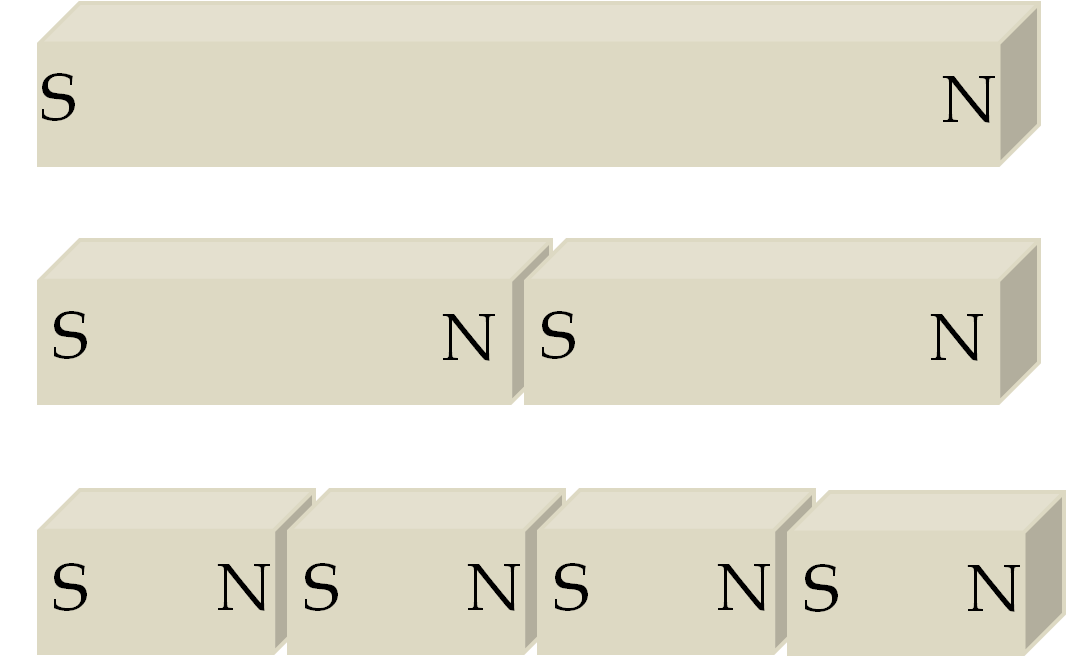Section 36.5 Gauss’s Law for Magnetic Field
Unlike electric charges, the poles of a magnet are not magnetic charges. The poles of a magnet cannot be separated. For example, suppose you have a bar magnet which is well-described by two poles. Now, if you cut the magnet in two pieces, you generate two additional poles as illustrated in Figure 36.61.

You can continue this process to atoms and subatomic particles. No one has yet not found any magnetic particle that has only one pole. It is said that magnetic charges, also called magnetic monopoles, do not exist. The fundamental entities of a magnetic materials are magnetic dipoles. Magnetic monopoles do not exist.
Recall that Gauss’s law for the electric field states that the flux of electric field is proportional to the net charge enclosed. If only opposite charges of equal magnitude, such as dipoles, are enclosed inside the Gaussian surface, then the flux through the surface will be zero since the net enclosed charge will be zero.
In the case of magnets, every closed surface, no matter how small, will enclose both North and South poles. Therefore, the Gauss’s law for the magnetic field will give the flux of the magnetic field through any closed surface always zero.
\begin{equation}
\oint\, \vec B \cdot d\vec A = 0,\tag{36.18}
\end{equation}
where we have denoted closed surface by a circle to the integral sign.

